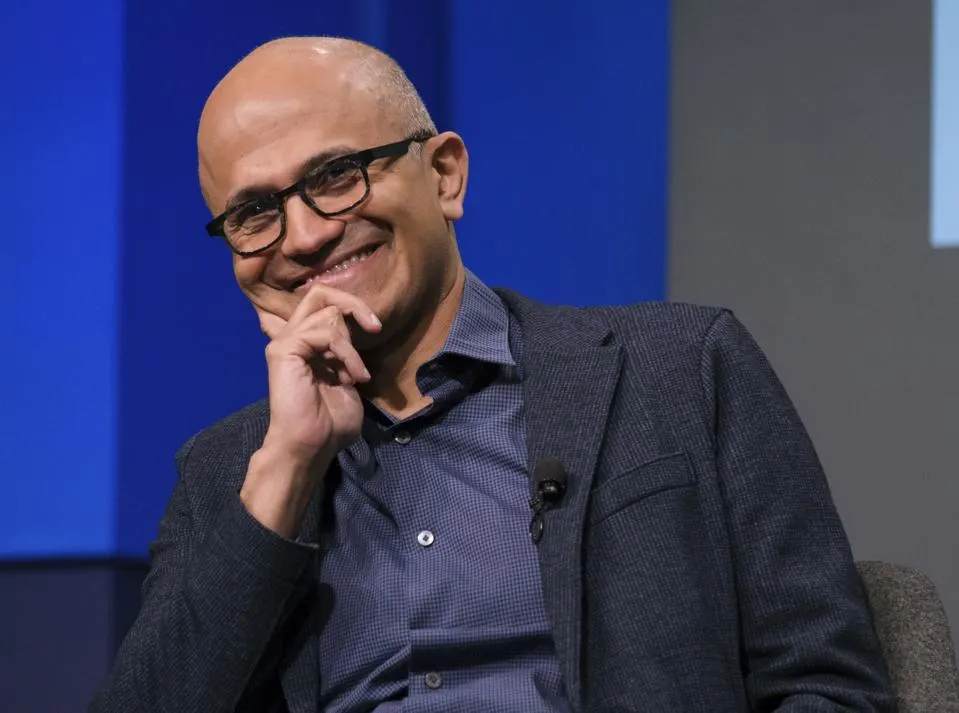How Mindsets Drive Processes In The World’s Most Valuable Firms
by Steve Denning
For the century after Frederick Taylor declared in 1911 that "the system must come before the man", processes dominated. In leading firms, mindsets now drive processes.

"Follow the process." - GETTY IMAGES
Whether firms know it or not, management embodies both mindsets and processes. For the century after Frederick Taylor declared in 1911 that “the system must come before the man”, processes dominated.
Today, in the world’s most valuable and fastest growing firms, the opposite is the case. Their people-oriented mindsets drive the processes and their extraordinary performance.
The Dominance Of Processes In 20th Century Management
Both Adam Smith’s pin factory in The Wealth of Nations and Frederick Taylor’s “system” of “scientific management” that “comes before the man” at Bethlehem Steel had the implicit goal of making money. Management was mainly about processes.
In the 1970s, when making money became the explicit goal of the firm, and maximizing shareholder value (MSV) became the only goal of the firm, the dominance of processes over mindsets was further consolidated.
The dominance of processes was further strengthened by the Business RoundTable’s endorsement of MSV in 1997 and was little affected by their apparent reversal of that endorsement in 2019. The reversal seems to have been no more than a political head fake. In most big firms and most business schools, management is still often seen as a set of processes and methods.
Human considerations are not totally ignored. Throughout the period, writers like Mary Parker Follett (1920s), Berle and Means (1932), Elton Mayo (1930s) and Douglas McGregor (1960) made the case for human factors. But in most firms, their pleas were subordinated to the firms’ processes and the cause of making money.
The Dominance Of Mindsets In The World’s Most Valuable Firms
Meanwhile, a game-change is under way. Over the last quarter-century, the world’s most valuable and fastest growing firms have embraced explicit mindsets that aim at creating value for customers and knowledge workers. In these firms, mindsets drive and upgrade the processes. Making money is a result, not the goal of the firm. Ironically, exponential financial gains have ensued. Let’s look at some trillion-dollar examples.
1. The Case of Microsoft Under Satya Nadella
When Satya Nadella became Microsoft’s CEO in 2014, the situation was dire. Microsoft was still making money, but its market capitalization had not increased in more than a decade. Most employees questioned the firm’s focus on shareholder value and its ability to innovate. They were tired of the combative culture. They were fed up with losing and falling behind. Often it felt like all they did was “deal with upper management, execute taxing processes, and bicker in meetings.” Staff doubted whether an insider like Nadella could get the company back on track. Staff wanted a clear, tangible, inspiring vision. Engineers wanted to lead again, not follow. They wanted to be cool.

Microsoft CEO Satya Nadella - GETTY IMAGES
Nadella saw that “Microsoft needed to regain its vision as the company that makes technology accessible to everyone and every organization." Nadella knew that he had to bring a different vision to life and a very different culture. Empathy and collaboration were key values. Above all, just saying interesting things would not be enough. He had to live the change. And he delivered.
“When you go in to talk to Satya,” said Brad Anderson, Corporate Vice President of Enterprise Client and Mobility at Microsoft, “you start with the customer. In the past, we used to compensate and reward the engineering teams based upon factors like - Did you ship on the date? Did we ship with the features that you said you would ship? But we didn't know if it was being used or not.”
“When we're going to talk with Satya, we pull up the dashboards and we show him all the usage metrics. What's the growth in the last seven days? What's the growth of the last month? What are people using? What are they not using? It's all grounded one hundred percent in the customer.”
Yet making difficult decisions were also key. Later in 2014, Nadella had to announce “a total write-off of the acquisition as well as plans to eliminate nearly eighteen thousand jobs, the majority of them because of the Nokia devices and services acquisition. It was heartbreaking to know that so many talented people who gave so much of themselves to their work would lose their jobs.”
2. How Amazon Maintains A ‘Day One’ Mindset
Amazon started with a customer-first viewpoint from its creation in 1994. From the start, Amazon focused on speed, agility, and a risk-acceptance mindset associated with a Day One startup—all the while adhering to the highest standards. In 1999, Jeff Bezos wrote, “We must be committed to constant improvement, experimentation, and innovation in every initiative. We love to be pioneers, it’s in the DNA of the company, and it’s a good thing too, because we’ll need that pioneering spirit to succeed.”

Amazon founder Jeff Bezos - GETTY IMAGES
As Jeff Dyer and Hal Gregersen, “working backwards from the customer” combines both mindset and process. The PR/FAQ requires both the articulation of the vision for the idea and why it is exciting (the PR mindset), along with the process “how to accomplish everything it would take to get there (the FAQ process). “It’s fine if, as the work gets underway, discoveries suggest that the vision should change somewhat; and in that case the PR/FAQ gets revised.”
Note that it is PR/FAQ and not FAQ/PR. PR drives the FAQ not vice versa. “PR” is however a misnomer. It is not just a sales pitch for a product, but rather the heart and soul of the meaning of the product for the customer. Without it, if the product is just a bunch of processes, with no human excitement, the product is dead in the water.
3. Design Thinking At Apple
“Steve Jobs understood what the soul of a company is,” wrote Satya Nadella in his book, Hit Refresh: A Quest to Rediscover Microsoft’s Soul. “He once said that ‘design is the fundamental soul of a man-made creation that ends up expressing itself in successive outer layers of the product or service.’ I agree. Apple will always remain true to its soul as long as its inner voice, its motivation, is about great design for consumer products.”
As Warren Buffett, the CEO of Berkshire Hathaway, has said, “I have a private plane and an iPhone: if I had to give up one of them, I would give up the plane.” Great design binds customers to the firm.
These Three Firms Illustrate A Management Pattern
The three firms discussed in this short article are examples of one facet of an emerging management pattern. Other facets of the pattern are discussed here. There are many other examples of the pattern that could have been chosen, both high value firms (Alphabet, NVIDIA, Tesla, Novo Nordisk, LVMH) and medium-sized firms (Danaher, Stryker, Otis). None of the firms are presented as models. All have flaws. But all of them are operating very differently—with very different results—from the majority of firms that are being run as a set of processes, methods, and systems.
Mindsets Must Be More than Lip Service
Having the mindset drive the processes is key to extraordinary performance. These firms are quite different from the typical utopian vision of a company value statement and its promotional communications. Such statements are odds with the firm’s processes that are constantly putting obstacles in the way of staff to living the stated values, instead of amplifying them. Talk of values in such firms is often no more than lip service.
Enabling a change in mindset change can’t be delegated. It is all about personal interaction and walking the talk. The firm’s leadership needs to avoid becoming the bottleneck. It needs to find the right people and authorize them help install useful processes and remove unhelpful ones. In the successful firms, the strong drive can cause the “wrong” people to leave the company, leaving the right people driving the right processes.
As a result, in these firms, talent tends to be driving strategy, enabling firms to create new businesses, new business models, platforms and ecosystems, and managing data as an asset.
Being explicit about mindsets that prioritize human considerations is thus not only the right thing to do. Paradoxically, when done well, it can make the firm exponentially more profitable.
None of the successful firms are without flaws. Most have been criticized for their customer data collection practices, toxic work cultures in parts of the firm, tax avoidance, and anti-competitive behavior.
But so long as firms, whatever their size, shower their customers and their knowledge workers with love, they are likely to go on outperforming their competition.
It is an open question when or whether the competition will catch up.
And read also:
- The Management Paradigm Driving The World’s Most Valuable Firms
- Putting The Man Before The System Drives The World’s Most Valuable Firms
References:
Original article from Forbes, written by Steve Denning and authorized to be published in the World Management Agility Forum by Steve Denning.
Original Article: https://www.forbes.com/sites/stevedenning/2024/02/11/how-mindsets-drive-processes-in-the-worlds-most-valuable-firms/
Note: This article draws on important contributions from my colleagues Curt Carlson, Hendrik Esser, and Hunter Hastings.